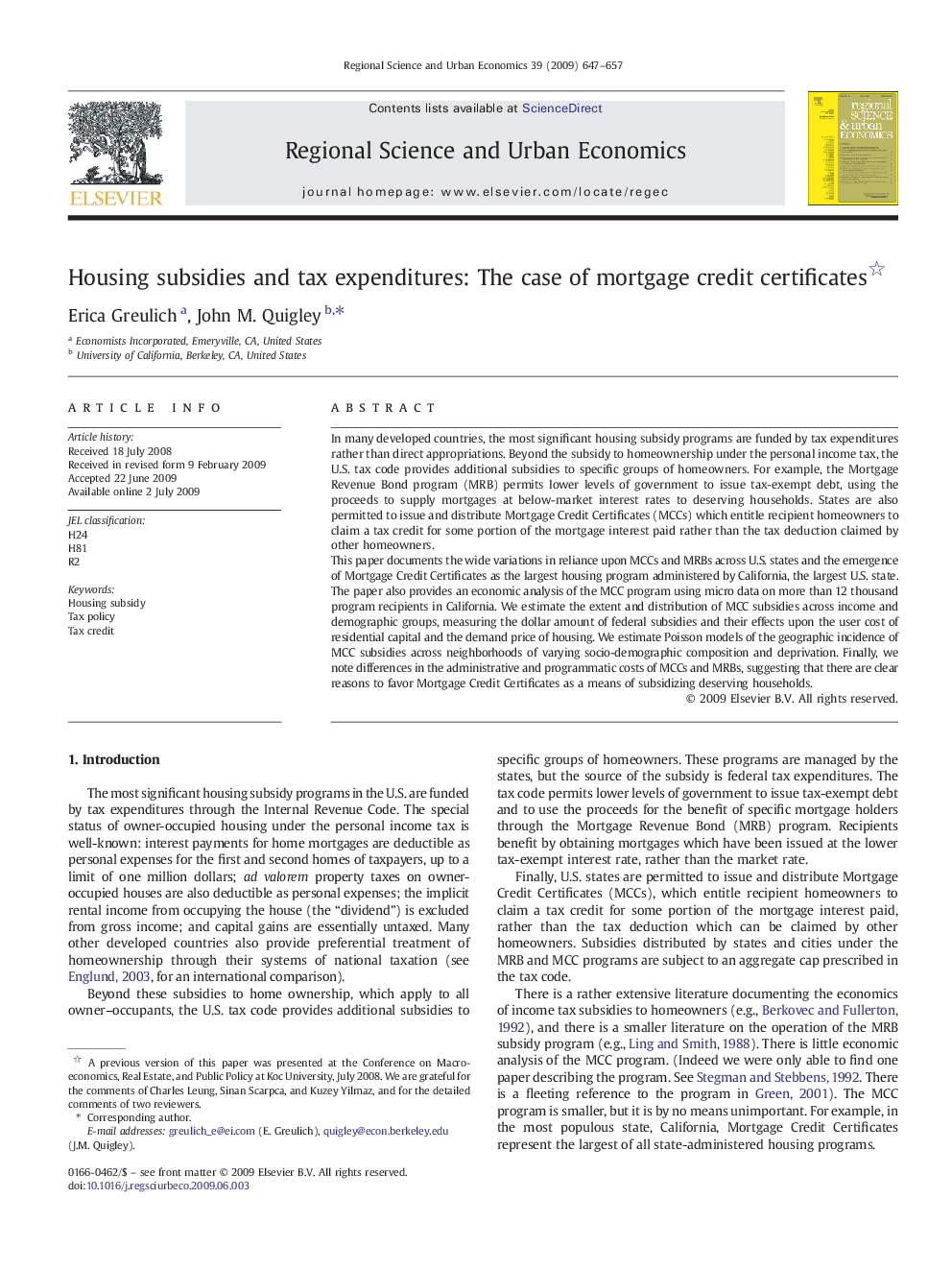| Article ID | Journal | Published Year | Pages | File Type |
|---|---|---|---|---|
| 983855 | Regional Science and Urban Economics | 2009 | 11 Pages |
In many developed countries, the most significant housing subsidy programs are funded by tax expenditures rather than direct appropriations. Beyond the subsidy to homeownership under the personal income tax, the U.S. tax code provides additional subsidies to specific groups of homeowners. For example, the Mortgage Revenue Bond program (MRB) permits lower levels of government to issue tax-exempt debt, using the proceeds to supply mortgages at below-market interest rates to deserving households. States are also permitted to issue and distribute Mortgage Credit Certificates (MCCs) which entitle recipient homeowners to claim a tax credit for some portion of the mortgage interest paid rather than the tax deduction claimed by other homeowners.This paper documents the wide variations in reliance upon MCCs and MRBs across U.S. states and the emergence of Mortgage Credit Certificates as the largest housing program administered by California, the largest U.S. state.The paper also provides an economic analysis of the MCC program using micro data on more than 12 thousand program recipients in California. We estimate the extent and distribution of MCC subsidies across income and demographic groups, measuring the dollar amount of federal subsidies and their effects upon the user cost of residential capital and the demand price of housing. We estimate Poisson models of the geographic incidence of MCC subsidies across neighborhoods of varying socio-demographic composition and deprivation. Finally, we note differences in the administrative and programmatic costs of MCCs and MRBs, suggesting that there are clear reasons to favor Mortgage Credit Certificates as a means of subsidizing deserving households.
